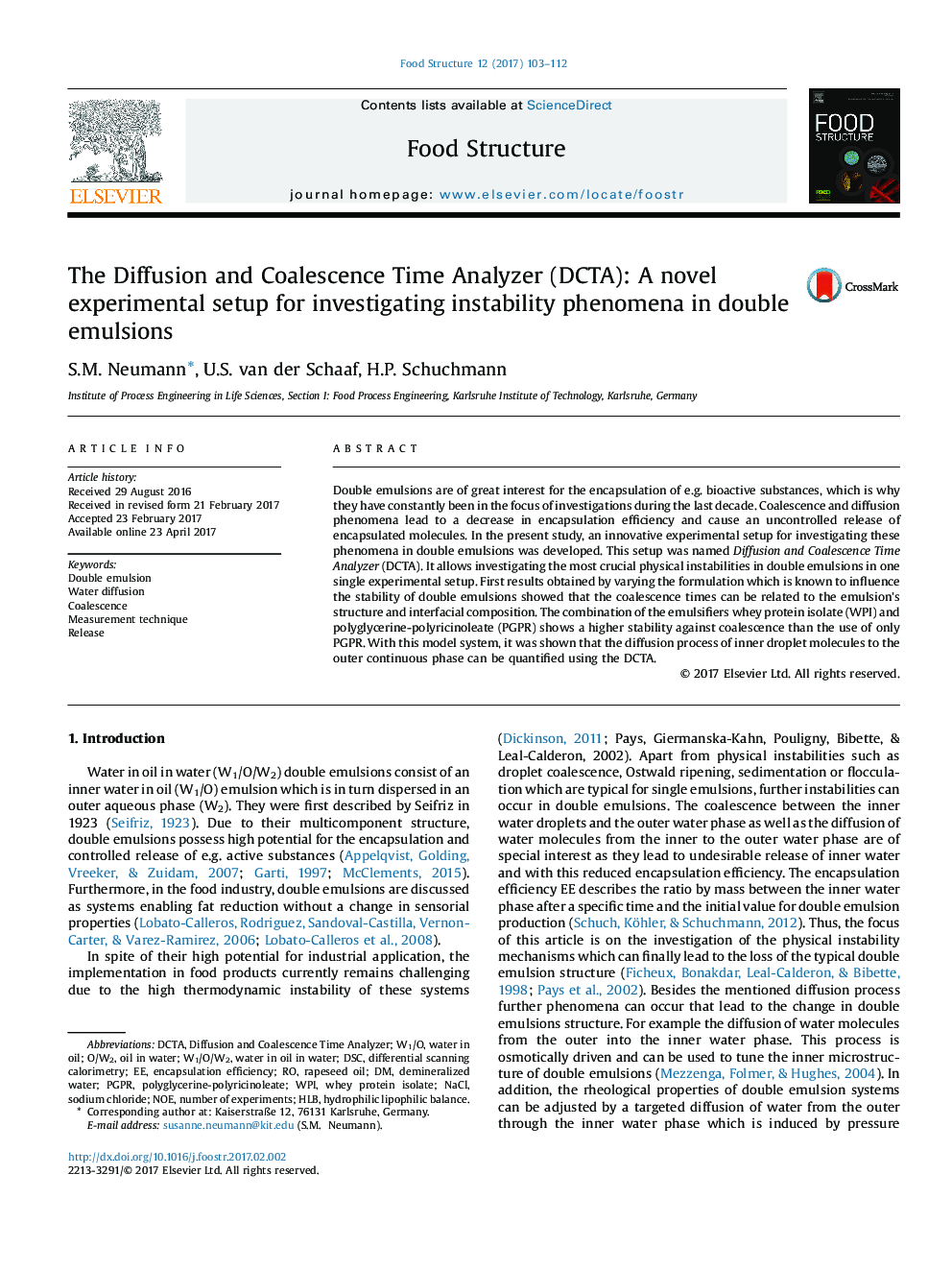| Article ID | Journal | Published Year | Pages | File Type |
|---|---|---|---|---|
| 6451808 | Food Structure | 2017 | 10 Pages |
â¢Novel experimental setup named DCTA was developed to investigate instability mechanisms in double emulsions.â¢Coalescence times between a water droplet and a planar oil water interface depending on the recipe parameters were measured.â¢A procedure for the statistical analysis of coalescence process is described and their application is proposed for further experiments.â¢Diffusion process was observed for two model systems to evaluate the experimental setup.
Double emulsions are of great interest for the encapsulation of e.g. bioactive substances, which is why they have constantly been in the focus of investigations during the last decade. Coalescence and diffusion phenomena lead to a decrease in encapsulation efficiency and cause an uncontrolled release of encapsulated molecules. In the present study, an innovative experimental setup for investigating these phenomena in double emulsions was developed. This setup was named Diffusion and Coalescence Time Analyzer (DCTA). It allows investigating the most crucial physical instabilities in double emulsions in one single experimental setup. First results obtained by varying the formulation which is known to influence the stability of double emulsions showed that the coalescence times can be related to the emulsion's structure and interfacial composition. The combination of the emulsifiers whey protein isolate (WPI) and polyglycerine-polyricinoleate (PGPR) shows a higher stability against coalescence than the use of only PGPR. With this model system, it was shown that the diffusion process of inner droplet molecules to the outer continuous phase can be quantified using the DCTA.
Graphical abstractDownload high-res image (147KB)Download full-size image
